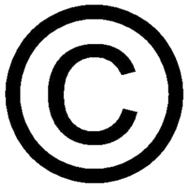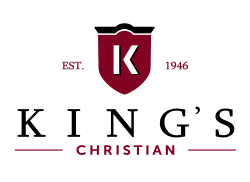Copyright
 copyright is a right found in the united states constitution
copyright is a right found in the united states constitution
The television show you watched last night, the movie you are going to see this weekend, the computer software you use to prepare your homework or send your email, the music you listen to in the car on your way to school: they are all copyrighted.
The exclusive right of an author or other creator to his or her creative work originates in Article I, Section 8, Clause 8 of the United States Constitution. Article I, Section 8, Clause 8 states that the Congress shall have power…
To promote the Progress of Science and useful Arts, by securing for limited Times to Authors and Inventors the exclusive Right to their respective Writings and Discoveries;
the exclusive right to our own creative work is not a natural right; it was created to benefit society
To understand copyright, it’s useful to first understand the First Amendment. The First Amendment protects five freedoms, including the freedom to think what you want to think, the right to tell others what you think (freedom of speech and of the press), the right to gather together with others to discuss what you think with each other, and the right to ask the government to change.
The First Amendment is designed to promote democracy, further the search for truth, and enable self-expression. The news, history, science, and the arts thus all receive protection under the First Amendment. So do movies, music, videogames and other forms of popular culture — because these materials affect our political attitudes and shape how we think, feel and act.
Copyright law builds upon the values of the First Amendment by emphasizing that sharing ideas and information leads to new knowledge and innovation.
The rights of authors, artists, scientists, and inventors are granted by Congress and are not intrinsic or natural. Copyright law protects works of “intellectual property” — creative expressions of ideas in fixed symbolic form. (Copyright is distinguishable from patents, which protect the expression of novel ideas in the form of objects or processes, and trademarks, which protect brand names and logos used on goods and services.) Books, movies, music, paintings, photographs, websites, images, video games, performances, architecture, and software are among the many types of creative work protected by copyright.
copyright involves a bundle of five different rights
Though we use the word “copyright” in singular form, it actually involves a bundle of several different rights. Owners have the exclusive right to do and to authorize others to do these five things:
- reproduce the work;
- distribute copies of the work to the public by sale or other transfer of ownership, or by rental, lease, or lending;
- perform the work publicly;
- display the work publicly;
- create derivative works; that is, to create new works based closely on the original, such as a translation of a book from one language into another, or making a book into a movie.
the berne convention and the digital millennium copyright act
Towards the end of the 20th century, the United States took two huge steps in the development of our copyright laws. In 1989, the United States became a party to the Berne Convention, an international agreement governing copyright. Under this agreement, the U.S. had to eliminate its requirement of registration of copyright works and of the mandatory copyright notice.
Nine years later, as Congress began to deal with the complex issues surrounding digital works, such as online images, videos and music, it passed the Digital Millennium Copyright Act of 1998. That Act extended copyright protection to all creative text and images on the Internet just as it does books, CDs, DVDs, and works in other media.
As a result of the Berne Convention and the Digital Millennium Copyright Act, today it is no longer necessary to register a copyright or even to post a copyright © notice on a work in order to gain protection. All creative works are automatically copyrighted from the moment they are put into tangible form.
how do we assert our claim to copyright in our own creative work?
Students, teachers, and all other members of the public are copyright owners of the work they create, unless they have signed a contract that gives others the right to their intellectual property. Some people think that there are complicated forms to fill out to secure a copyright. But actually it’s an automatic process that requires no forms to fill out. Today, you don’t even have to put the little © in the circle on your work — although long ago, that was a requirement of the law. At the moment a work is created, copyright automatically protects original works of authorship that are fixed in a tangible form. This includes student assignments, videos, art, music, and other creative work.
what happens when someone’s copyright is infringed (violated)?
When a copyright is infringed, or violated, the copyright holder has the right to stop someone from printing, performing, sharing or otherwise disseminating the work. Infringing works can be seized and destroyed. The copyright holder has the right to bring a lawsuit for copyright infringement in which it can collect monetary damages. Criminal penalties, including fines and imprisonment are also available. For these reasons, copyright is not unlimited and the important provision of fair use is an exemption to copyright that ensures that copyright law does not become an instrument of private censorship.
what to do if you want to use a copyrighted work
Users of Copyrighted Material have Choices. Students and teachers use copyrighted material in their creative work for many different reasons. The important thing is to critically think about the choices we have with regards to using copyrighted material. Some people mistakenly believe that the term “educational” means that all uses of copyright work are permitted. Instead, it’s more useful for educators and students to think about their four choices as creative users of other people’s copyrighted work:
- Ask permission and/or buy a license. In some circumstances, content is purchased using a licensing agreement, and it’s sometimes called permission or clearance. It is a legal contract between two parties. The copyright holder in effect grants the licensee certain rights to use the content.
- Use royalty-free, public domain or copyright-friendly licensed content. Everyone is free to use work in the public domain. When you use content that has a Creative Commons license, the owner has granted you a special license to freely use the content. Depending on the type of CC license, you may be able to repurpose the content for your own creative work.
- Claim fair use. Fair use is a part of the copyright law that allows people to use excerpts of copyright material without payment or permission for purposes such as criticism, news reporting, teaching, and research.
- Don’t use it. People are always free to choose not to use copyrighted material, and sometimes, in some context and situations, this is the best choice. Learning how to select the best option from these four choices takes practice.
copyright does not last forever, nor was it ever intended to
The Limits on Copyright. Copyright initially lasted 14 years, plus 14 additional years if the copyright owner renewed the registration. However, the duration of owners’ rights has lengthened over the years. A work created today by an individual author will be protected by copyright for 70 years after the author’s death. Ownership control is even longer if the copyright is for a work commissioned by a corporation — either 95 years from the year of its first publication, or 120 years from the year of its creation.
some helpful fair use and copyright resources…
To become more familiar with the doctrine of Fair Use you can read this government publication.
You can also check out this Fair Use Strategy Guide from the OWL at Purdue. It’s an easy-to-understand fair use and copyright guide from one of the most trusted sources on the Web!
And don’t forget to check out Peter Hirtle’s handy chart, Copyright Term and the Public Domain in the United States, if you really need to determine the copyright date of a creative work. Note that use of Mr. Hirtle’s chart is governed by the Creative Commons Attribution 3.0 License.
To license music, you should consult one of the three U.S. performing rights organizations: ASCAP, BMI, or SESAC. More information here.
Exceptions to Copyright

Fair Use

Public Domain

Creative Commons
fair use
Copyright law provides strong protection to owners and strong protection to users. The law balances the rights of the copyright holder and the user, and when considering a copyright case, judges must consider whether the social benefits of unauthorized use of copyrighted material outweigh the private harms to the copyright holder.
United States law specifically allows courts to make that balance. Title 17 of the United States Code, section 107, permits “the fair use of a copyrighted work, including such use by reproduction in copies or phonorecords or by any other means specified by [sections 106 and 106A], for purposes such as criticism, comment, news reporting, teaching (including multiple copies for classroom use), scholarship, or research.”
In short, the doctrine of fair use allows the public to use limited parts of copyrighted works for certain purposes without the permission of the copyright holder.
In determining whether the use made of a work in any particular case is a fair use, the factors to be considered include:
-
- the purpose and character of the use, including whether such use is of a commercial nature or is for nonprofit educational purposes:
- Nonprofit, educational use such as criticism, comment, news reporting, teaching, scholarship, and research are favored over commercial use; uses that are transformative are favored over mere reproductions. When you quote a few lines of someone’s work as a part of a paper you are doing, this is considered transformative because you are making something new.
- the nature of the copyrighted work:
- Unpublished works are given greater protection than published works; creative works such as art, music, poetry, and feature films are given greater protection than nonfiction works.
- the amount and substantiality of the portion used in relation to the copyrighted work as a whole:
- The percentage of the whole work is considered here as well as the “heart of the work” and the nature of the need; photographs and artwork are tricky because usually the whole work is needed, but courts have ruled that a thumbnail or low-resolution of an image is a lesser “amount.”
- the effect of the use upon the potential market for or value of the copyrighted work:
- This is more difficult to assess, but if your use is a substitute for what might have been a compensated use (for example, you photocopy a workbook instead of purchasing it), that would be deemed unfair, so ask yourself if the work was reasonably available for purchase before you decide to use it for free.
- the purpose and character of the use, including whether such use is of a commercial nature or is for nonprofit educational purposes:
Fair use is the reason that you are able to quote passages from copyrighted works in papers that you write, the reason your teachers can make copies of a limited number of pages from a copyrighted book, and the reason that copyrighted music can be used in parody. However, fair use can be difficult to apply. The U.S. Copyright Office has said that the distinction between fair use and infringement may be unclear and not easily defined. and there is no specific number of words, lines, or notes that may safely be taken without permission. Acknowledging the source of the copyrighted material does not substitute for obtaining permission…The safest course is always to get permission from the copyright owner before using copyrighted material. The Copyright Office cannot give this permission.
public domain
Another important exception to copyright protection is the concept of public domain. When copyright expires, a work is said to become part of the public domain. That means that members of the public have the right to use that work in any way they would like without getting permission from anyone.
Examples of works in the public domain include
- All government publications. Thanks to President Grover Cleveland and the Printing Act of 1895, everything published by the government is automatically in the public domain.
- Ideas, facts, blank forms, words, names, and short phrases cannot be copyrighted (plagiarism considerations still apply, however).
- Works on which the copyright has expired, such as the works of Shakespeare and Beethoven, and most anything created in the U.S. before 1923. Because of the very long term of copyright today, very few contemporary works are likely to fall into the public domain within your lifetime.
- Works that have been placed into the public domain by the author, essentially as a gift to the public. One of the greatest examples of this is the software for the World Wide Web, developed by Tim Berners-Lee while employed as a scientist for the European Organization for Nuclear Research.
“if it’s on the internet, it’s in the public domain…isn’t it?”
There is a huge misconception out there that anything on the Internet is in the public domain, and that anyone can use it. NOT TRUE! With the U.S. participation in the Berne Convention in 1988 and passage of the Digital Millennium Copyright Act in1998, all creative works are granted automatic copyright protection from the minute they are made, and it does not matter that you found the work on the Internet. And, remember, there no longer needs to be a copyright notice © on it. Copyright protection is automatic and instantaneous for all creative work whether in print or on the Internet, with or without copyright notice or registration, for the life of the author/artist plus 70 years.
the creative commons license
The most recent and innovative exception to copyright is the Creative Commons License.
In 2002 a private organization called Creative Commons developed a form of licensing for creative works that enables copyright holders to share them on the Internet subject to certain limitations. The Creative Commons license is not a law. I think of it as a contract between the copyright holder and the public.
Take a look at this video from Creative Commons. It brings together the concepts of copyright and creative commons licensing.
It is important to remember that because the Creative Commons license is not a law, it does not alter any provision of the copyright laws. It merely permits the public to make limited use of copyrighted work in accordance with the permission granted by the owner. Think of it as a substitute for having to privately obtain permission from the owner to use his or her work.
There are several types of Creative Commons licenses, and here are the most common:
-
- CC BY Attribution You can use and modify this image, even commercially, as long as you give credit to the license holder in the manner specified by him.
- CC BY-SA Attribution-ShareAlike You may use and modify this image, even commercially, as long as you give credit to the license holder plus if you distribute the altered work, you may only do so under the same or similar license to this one.
- CC BY-ND Attribution-NoDerivs The image may be used “as is” with no modification allowed, and attribution must be made in the manner specified by the license owner.
- CC BY-NC Attribution-NonCommerical You may use and modify the work, but only for non-commercial purposes, and you must give attribution to the license holder in the manner specified by him or her.
- CC BY-NC-SA Attribution-NonCommerical-ShareAlike You may use and modify this image for non-commercial use, as long as you give credit to the license holder plus if you distribute the altered work, you may only do so under the same or similar license to this one.
- CC BY-NC-ND Attribution-NonCommercial-NoDerivs The image may be used “as is” with no modification allowed, for non-commercial purposes only, and attribution must be made in the manner specified by the license owner.
creative commons is not just for images
The CC license can be used for all types of intellectual property, including text, audio, and video. MIT even licenses its OpenCourseWare under Creative Commons for all to share. And, of course, everything on Wikipedia is licensed under a Creative Commons license. To see other prominent users of the CC license, take a look at Creative Commons Content Directories and Who Uses CC? and the links provided there.
what about students using images and music from the internet for school projects?
The uncontrolled copying and use of photographs found on the Internet is a common example of copyright infringement, even when the photographs are being used by students for school projects. Photographs present special fair use issues because we usually use a photograph in its entirely, and use of 100% of a protected work typically falls outside the fair use exception to the copyright laws.
The first thing to remember about photographs is that just because the owner put them on the Internet does not mean that they are in the public domain. Photographs that are put on the Internet are automatically copyright-protected even though there might not be a copyright notice present. So the first thing we need to understand about photographs on the Web is that we must assume that they are copyrighted unless it is stated otherwise.
The next thing to know is that there are several situations in which we are permitted to use photographs we find on the Internet, and they are these:
- when the image is already in the public domain, i.e., the period of copyright protection has expired or the image never had copyright protection at all;
- when we reduce the size of an image to a thumbnail before we use it (at least one court has ruled that this is fair use);
- when we use the image in a project that will not leave the classroom;
- when the owner of the image has agreed to its use via a Creative Commons License or other free use license, or following your request for permission made to the copyright holder.
To make sure that we are complying with copyright laws it is best to use images and music that are either in the public domain or are licensed under Creative Commons.
sources of public domain, creative commons, and other freely licensed images
A great source of Creative Commons Images is Flickr Creative Commons. Simply type your search term(s) into the search box. It works like an ordinary search engine, except that all of the results will be licensed under Creative Commons.
You will find more great sources on our page “Free-to-Use Sources of Online Content.”
